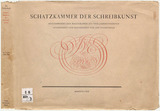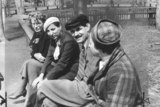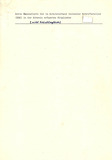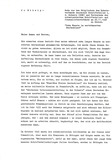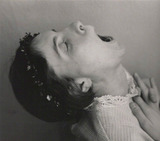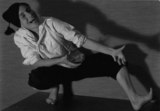Jakob Haringer: Das Fenster [The Window], poetry typescripts
The scrap paper poetJakob Haringers poetry makes references to Expressionism, but its ballad-like style and the moods evoked by its musicality place it more in the tradition of François Villon, and particularly of Romanticism. In 1934, while in exile, Haringer published his poem Deutschland-Ode [Ode to Germany] in the exile newspaper Neuen Tage-Buch This work leaves the reader in no doubt of his anti-Fascist sentiments and concludes with an optimistic look ahead to the time when the country would finally be liberated: “The blitz.
Jakob Haringer’s refugee identity document, 22 January 1944
Hide-and-seek with the authoritiesThe refugee identity document of Jakob Haringer, whose German citizenship was revoked in July 1936, bears eloquent witness to the regular, thorough checks by the Aliens Police to which exiles in Switzerland were subjected between 1933 and 1945. Haringer played hide-and-seek with the rigid Aliens Police for several years.
Jan Tschichold: Schatzkammer der Schreibkunst (1945)
In July 1933, the typographer and book designer Jan Tschichold – after release and detention – succeeded in fleeing to Switzerland. With a partial work permit, he taught at the Allgemeine Gewerbeschule in Basel and took on design jobs from publishers.
János Reismann: member of the Deutsches Gebietstheater Dnjepropetrowsk, photograph (1935/36)
A wandering troupe in Soviet exileThe Deutsche Gebietstheater Dnjepropetrowsk (German Regional Theatre Dnjepropetrowsk) was founded in 1935 at the encouragement of the culturally-interested politician Mendel Chatajewitsch in Dnjepropetrowsk, a Ukrainian industrial town between Kiev and Odessa. In this region there was a population descended from German immigrants who had never experienced German theatre before.
Jean Leppien: Dust jacket for Mit uns die Sintflut by Georg Friedrich Alexan (1935)
The painter Jean Leppien painted very little after fleeing from Germany to France in 1933. He tried to earn a living for himself and his girlfriend (the former Bauhaus student Suzanne Ney) by taking on work such as creating photomontages, designing posters, decorating shop windows and other odd-jobs.
Jean Leppien: Ein Blick hinaus (1987)
Jean Leppien's wife Suzanne was arrested on 21 March 1944 by the Germans. This is the day on which his autobiography begins.
Jo Mihaly upon setting up the “Schutzverband deutscher Schriftsteller” in Switzerland, list of names (1944)
In 1944, the dancer and author Jo Mihaly began establishing contact with German writers who had fled to Switzerland. Her goal was to reform the Schutzverband deutscher Schriftsteller (or “SDS”; English: “Association of German Authors”), a defunct labour union entity that had protected the interests of authors in Germany.
Jo Mihaly: 10 Monate im zerstörten Deutschland, speech manuscript (26 November 1946)
[10 months in ravaged Germany]Directly after the end of the Second World War, the writer and dancer Jo Mihaly decided to get involved in the cultural rebuilding of Germany. The schweizerisch-deutsche Kulturvereinigung Basel [Swiss-German cultural association] collected over 14,000 books and educational materials for Germany.
Jo Mihaly: Blume im Hinterhof, photograph (1931)
In this solo dance, which lasts just over two minutes, the dancer Jo Mihaly shows how a flower blooms in a dark courtyard, how it stands there pitifully for a time and dies shortly thereafter. Long stretches of the dance are performed kneeling.
Jo Mihaly: Fische fürs Volk [Fish for the People], Photograph (1935)
Upon emigrating with her husband, the actor Leonard Steckel to Switzerland in 1933, the dance performer Jo Mihaly was refused a work permit, as was the case with many German immigrants at the time. Mihaly could thus only continue to give her performances in private circles.
![Manuscript notes: Jakob Haringer, Das Fenster [The Window] Manuscript notes: Jakob Haringer, Das Fenster [The Window]](/KIE/Content/EN/Images/objects/haringer-jakob-das-fenster-gedichttyposkripte-en.jpg?__blob=thumbnail&v=4)
![Manuscript notes: Jakob Haringer, Das Fenster [The Window] Manuscript notes: Jakob Haringer, Das Fenster [The Window]](/KIE/Content/EN/Images/objects/haringer-jakob-das-fenster-gedichttyposkripte-en.jpg?__blob=thumbnail&v=4)

